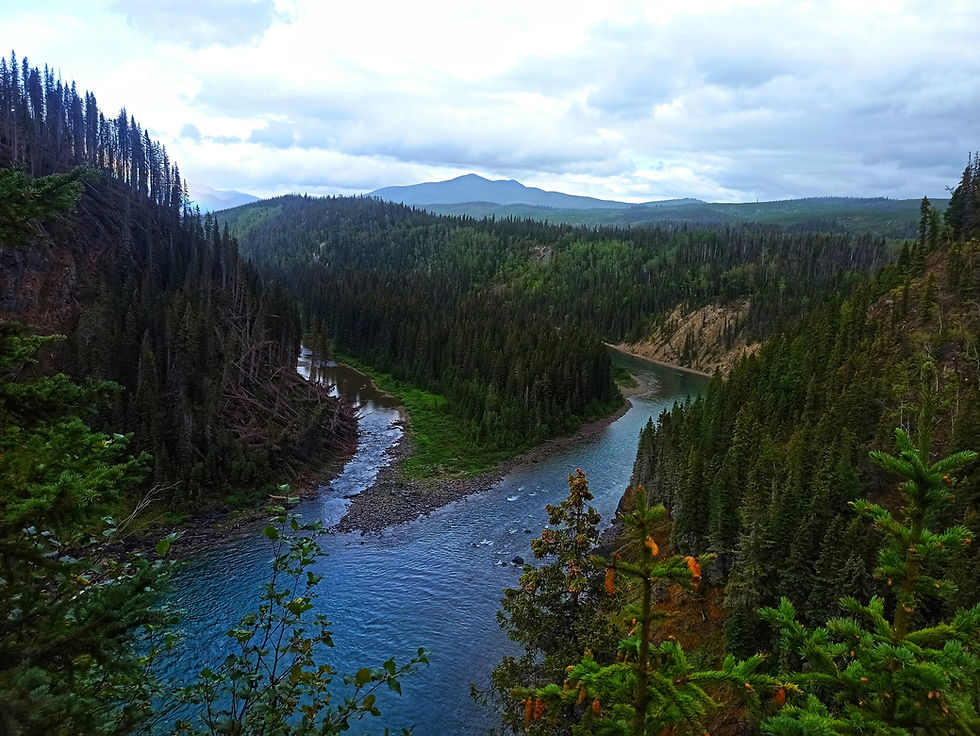Discover Canada and Explore the Fossils and Geodiversity of Eastend in Saskatchewan
- Wayne Munday
- Oct 11
- 4 min read
Sip back and discover Canada and explore the fossils, dinosaurs and geodiversity of Eastend, located approximately 100 Km north of the Montana border on the northern flank of the Cypress Hills Uplands within Saskatchewan’s Missouri Coteau set amidst the dramatic Frenchman River Valley Badlands. This landscape of steep gullies, hoodoos and colourful sediments is carved into a near-continuous sequence of Late Cretaceous to Paleogene rocks, including the Bearpaw, Eastend and Frenchman formations. This succession records the advance and retreat of the Western Interior Seaway across the Great Plains between the Rocky Mountains and the Mississippi River, spanning what is now southern Canada and the central United States. The Bearpaw Formation (~83–70 Ma) preserves marine shales and fossils such as ammonites, bivalves and marine reptiles marking the region’s last major seaway incursions. Overlying this, the Eastend Formation was a nearshore marine environment that has yielded mosasaur vertebrae, turtle shells and shark teeth. Capping the sequence is the Frenchman Formation that tells a story of a lush terrestrial coastal-plain ecosystem where once Tyrannosaurus rex, Triceratops, small theropods, turtles, crocodilians early mammals lived. Recent discoveries, such as the basal ornithopod Thescelosaurus assiniboiensis and early mammal Protungulatum highlight a previously underappreciated dinosaur and mammal biodiversity. Plant fossils and amber indicate subtropical to warm-temperate climates influenced by storms and floods that transported, trapped and buried bones alongside the in situ preservation of a forested floodplain. This part of Saskatchewan provides a window into one of the last terrestrial ecosystems before the Cretaceous–Paleogene extinction.

The town of Eastend is located about 100 Km north of the US State of Montana border on the northern flank of the Cypress Hills Uplands within the Missouri Coteau physiographic region in the south west Saskatchewan where the Frenchman River Valley Badlands present a dramatic landscape of steep gullies, hoodoos and colourful sediments are sculpted from the near continuous sequence of Late Cretaceous to Paleogene marine and continental rocks of the Bearpaw, Eastend and Frenchman formations. Exposed on the uppermost part of the Western Canadian Sedimentary Basin these formations that tell a story of the advance and retreat of the Western Interior Seaway across the vast expanse of the Great Plains between the Rocky Mountains and the Mississippi River spanning parts of the central United States and southern Canada.
Eastend is today renowned for the discovery of “Scotty” the world’s largest Tyrannosaurus rex in the Summer of 1991. Robert Gebhardt a local High Schoolteacher joined by a team of palaeontologists exploring the Frenchman River Valley made a remarkable discovery of a worn tooth base and tail vertebra belonging to a 65-million-year-old Tyrannosaurus rex. Named “Scotty” apparently after a bottle of Scotch the Team celebrated the fossil find with this was the first ever T. rex found in Saskatchewan and one of the largest and most complete specimens in the world with roughly 75% of its bones preserved and now displayed at the Royal Saskatchewan Museum T. rex Discovery Centre in Eastend.
The sequence of the Bearpaw, Eastend and Frenchman formations show a dramatic environmental shift at the end of the Cretaceous Period. The sequence begins with the Bearpaw Formation dated between ~83 – 70 million years ago. This is a marine shale deposited in the Western Interior Seaway and preserves fossils a assemblages of ammonites, bivalves and marine reptiles and representing the region’s final major marine incursions. Overlying the Bearpaw is the Eastend Formation dated to between ~70 – 66 million years ago and marks retreat of the seaway and the onset of terrestrial sedimentation of sandstones, siltstones, and claystones from rivers in a nearshore shallow-marine environment.

The Eastend Formation is generally considered less fossiliferous but has yielded important marine and transitional fossils such as mosasaur vertebrae, turtle shell, fish and shark teeth have been reported from stratigraphic biohorizons such as the Road Cut and Humphrey sites southeast of Highway 13.

Capping this sequence is the Frenchman Formation and indicates a fully terrestrial landscape of a lush coastal plain and estuary within meandering river ecosystem. Importantly the Frenchman Formation preserves a fossil record of large dinosaurs including Tyrannosaurus rex (“Scotty”) along with Triceratops horridus and Triceratops prorsus.

The Frenchman Formation is one of the most significant fossils sites in North America and arguably one of the final ecosystems of the Late Cretaceous. Exposed prominently along the Frenchman River Valley and in Grasslands National Park East Block this formation also yields smaller theropods, crocodilians, turtles (Axestemys), fish and early mammals. Plant fossils are also abundant such as ferns, ginkgoes, coalified logs and amber inclusions providing evidence of a subtropical to warm-temperate climate.
Recently, the herbivorous basal ornithopod Thescelosaurus assiniboiensis (meaning "Wondrous Lizard") has been found who would have lived alongside Tyrannosaurus and Triceratops and suggests that smaller dinosaurs were more diverse than previously thought immediately before the extinction event. Additionally, the presence of Protungulatum provides the earliest occurrence of mammals. Many fossils of bones are disarticulated and show evidence of having been transported by storms and floods while some plants and amber remained largely in situ having been rapidly buried on a ancient forested floodplain.
Together the Eastend Formation and overlying Frenchman Formation records the final regression of the Western Interior Seaway and the shift from a marine environment to one of the last terrestrial ecosystems before the Cretaceous–Paleogene (K–Pg) extinction event.








